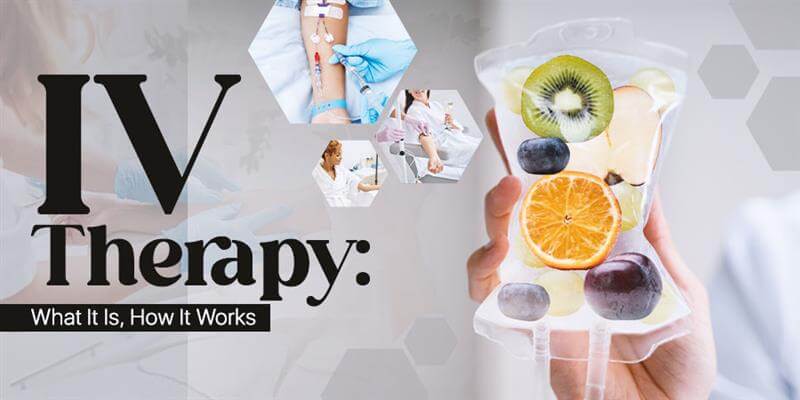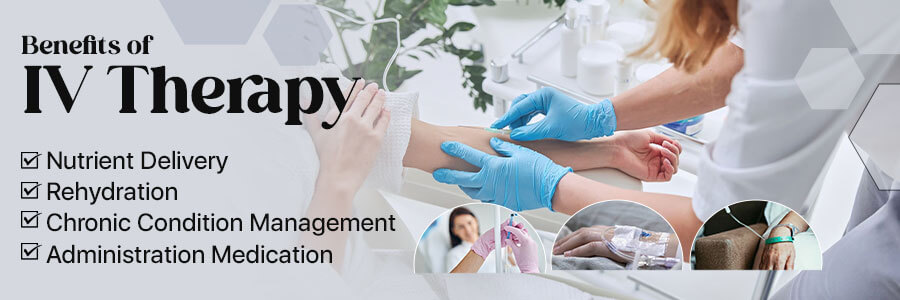To schedule an appointment call: 1 (800) 605-0031
To schedule an appointment call: 1 (800) 605-0031

Vitamin intravenous (IV) therapy is an effective and efficient way to support and maintain your wellness in little time. It uses IV fluids to send required medicines, nutrients, and vitamins directly into the bloodstream and also hydrates the body. But what does science say about it? Some think it comes with potential risks and drawbacks.
In this article, we will look into IV therapy, its benefits, its potential risks, and everything else you need to know.
These are specially formulated liquids injected into a vein to treat or prevent dehydration and electrolyte imbalances. From pediatric to senior care, for sick, injured, undergoing surgery, or people dehydrated from excessive heat, IV therapy can benefit almost anyone and is a simple, safe, and common procedure with minimal risk.
This therapy gets the name IV from the fact that the fluids are injected into a person’s veins using an intravenous (IV) tube.

The human body is made up of 60% water. Every cell of the body requires water. A lack of sufficient water in the body causes dehydration. However, drinking less water for one day does not typically require IV therapy—it may become necessary when a person is seriously dehydrated, which typically occurs when you:
Since the IV fluids are sent through the veins, all vitamins and nutrients are delivered directly into the bloodstream without filtering through the digestive system. Unlike conventional oral supplements, which must pass through the digestive system to show their effects, slowing the process, IV therapy sends the full dose of vitamins and minerals straight into the bloodstream to relieve problems.
Immediate absorption offers immediate therapeutic effects on a cellular level, rapidly restoring to its previous efficiency by combating the cause, be it dehydration, hangover, or oxidative stress.
All substances have bioavailability. Bioavailability means the portion of the substance that enters into circulation when it is introduced into the system. The amount absorbed will determine the effects.
In the case of an oral supplement, the stomach breaks it down, and the liver processes it, which can reduce the bioavailability, cutting down the amount of goodness the body receives. IV treatment boosts bioavailability by a maximum (100%). So, when IV fluids are administered, all the vitamins, minerals, and medicines are going directly into the bloodstream.
IV therapy is generally safe when administered by trained professionals. However, it carries some risks, such as bruising, infections, inflammation, and, in rare cases, serious complications like fluid overload or blood clots.
Here’s a more detailed look at the benefits and risks of IV therapy:

Are you wondering, “Where can I get IV fluids near me?” Visit Samaritana Medical Clinic and consult a doctor to diagnose your problem and find an appropriate solution. Do you need IV therapy, or does your condition require a different treatment? You should not decide to administer IV to yourself or anybody else without professional knowledge. Our healthcare professionals are ready to meet your medical needs and create a personalized treatment plan for you.
Must Read: Symptoms, Causes, and Treatment of Multiple Sclerosis